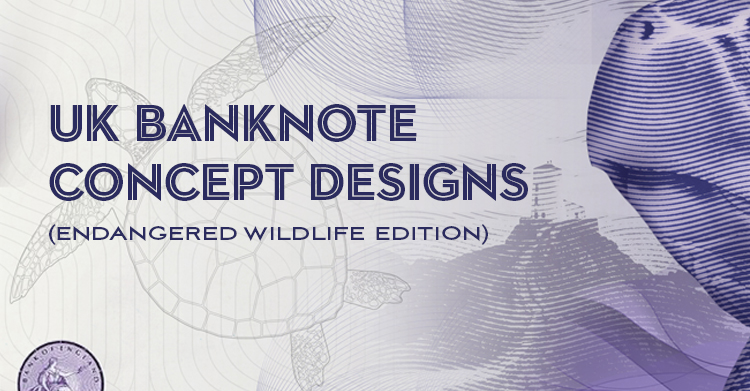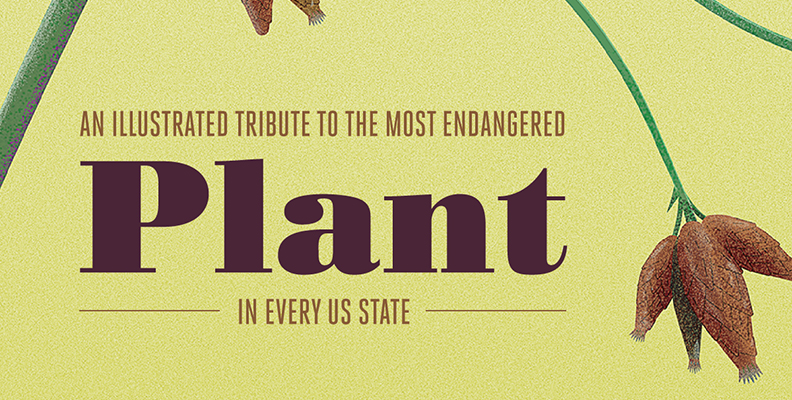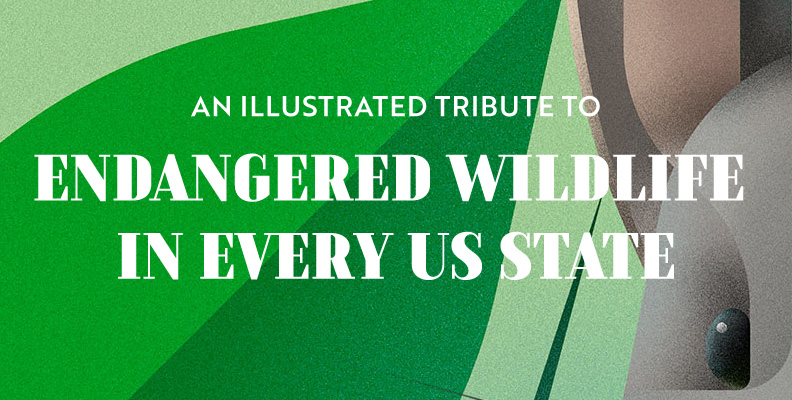Banknotes are fascinating things – little works of art that pass through our hands each day almost unnoticed. Every so often, there is a news story about a new design, and perhaps some controversy over which historical figure will feature on the front of the note. But what if the Bank of England is getting it all backwards?
It’s fine to celebrate the achievements of the past, but we decided to put a new spin on things by thinking about the future that humankind needs to protect. Our new series of speculative banknote concept designs celebrates not great humans that we’ve lost, but endangered species that we might lose if we don’t put more work, and money, into saving
1. Lake District: Red Squirrel
150 years ago, the grey squirrel was introduced to the UK to add diversity to countryside wildlife, and today we happily share our towns and cities with the critters. Unfortunately, a major side-effect of this ill-thought-through plan is that the greys have brought squirrelpox virus with them – and it has decimated the native population of red squirrels.
The greys are also out-eating the reds and sometimes even stealing their food. Red squirrel numbers have dropped from 3.5 million to just 140,000 but are slowly on the rise again. Sadly, a new pox outbreak in the red stronghold of the Lake District has put the good work of conservationists in jeopardy.

2. Fowlmere: Turtle Dove
Turtle dove numbers have plummeted by 97% since 1970 due to over-hunting and the loss of feeding habitats. It is the fastest declining bird species in the UK with less than 5,000 breeding pairs left.
The RSPB are encouraging farmers and other property owners to allow hedgerows to run wild to create protective habitats for chicks. Sowing plants whose seeds turtle doves like to eat may also help prolong the sound of their distinctive coo in places such as the Fowlmere Nature Reserve in Hertfordshire.

3. Welsh coast: Loggerhead Turtle
Turtles once shared the planet with dinosaurs, and each individual might live as long as a human being. But human interference has caused a drastic diminishing of the species over the past six decades.
Loggerhead turtles divide their time between far-flung locations from the coast of Wales to Florida and New Carolina, following the currents and the warm water. Industrial fishing, the development of coastal areas, and climate change all play a part in the reptile’s precarious situation.

4. Coed Hafod y Llyn: Pine Marten
The pine marten is a cuddly-looking hunter who’s tough to spot in the forest since she is nocturnal and blends right into her woodland setting. Pine martens used to be the second most common carnivore in the UK, but now teeter on the brink of extinction due to the impact of the fur industry and deforestation.
Scottish pine martens have recently been introduced to the woodlands of Wales where numbers had dwindled, and these migrants are expected to produce their first young ‘kits’ this year.

5. Scottish Highlands: Scottish Wildcat
Wildcats are so rare that they have begun interbreeding with domestic or feral cats, which is compromising the genetic lineage of the species. It can also result in the spreading of feline diseases.
They can grow to nearly a metre long and stalk the woods of the Scottish Highlands, where they are sometimes mistaken for ordinary cats by gun-wielding farmers keen to protect their game birds from predators. It’s reckoned there may only be a 100-300 wildcats left.

6. Moray Firth: Bottlenose Dolphin
Just a few hundred of these playful, sociable, highly intelligent creatures remain in the Moray Firth and Cardigan Bay. If their international number is currently stable, there are fears that overfishing in the next couple of decades will leave bottlenose dolphins short of food.
What’s more, conservationists fear that toxic chemicals introduced to the sea by human culture may harm the general health of dolphins and their ability to reproduce.

7. Lough Neagh: Swift
The number of swifts in the UK has halved in just two decades leading up to 2015. The primary cause for their decline is quite specific: swifts like to return to the same nest on their return to the UK from Africa each summer, but humans keep sealing up or knocking down the old buildings where they’ve nested!
But this turn of events also means there’s a direct way that ordinary people can help. The RSPB recommends setting up a nestbox for swifts outside your home. Don’t worry, they’re not as noisy when they’re nesting as they are when they’re swooping around.

8. Black Mountain: Irish Hare
There are over 300,000 Irish or mountain hares in the UK, which may not sound so bad – it’s just that certain areas, especially in England, have seen great fluctuation in numbers. As the effects of climate change on the landscape become more profound, so will the need to take steps to protect them.
Disease, and competition with rabbits and brown hare species, are other threats faced by these adorable critters.

Conservation of endangered animals requires more than cold, hard, cash – it benefits, too, from public awareness and participation. Share these animal-themed banknotes with your friends to help spread the word!
Sources
Bank of England (2018). Banknotes. bankofengland.co.uk
Revesz, R. (2017). Britain’s last red squirrel population being infected with deadly virus after killer greys infiltrate protected area. independent.co.uk
RSPB (2018). Turtle Dove Extinction Appeal. rspb.org.uk
RSPB (2018). Create a high home for swifts. rspb.org.uk
Scottish Wildcat Action (2015). Wildcat FAQs. scottishwildcataction.org






